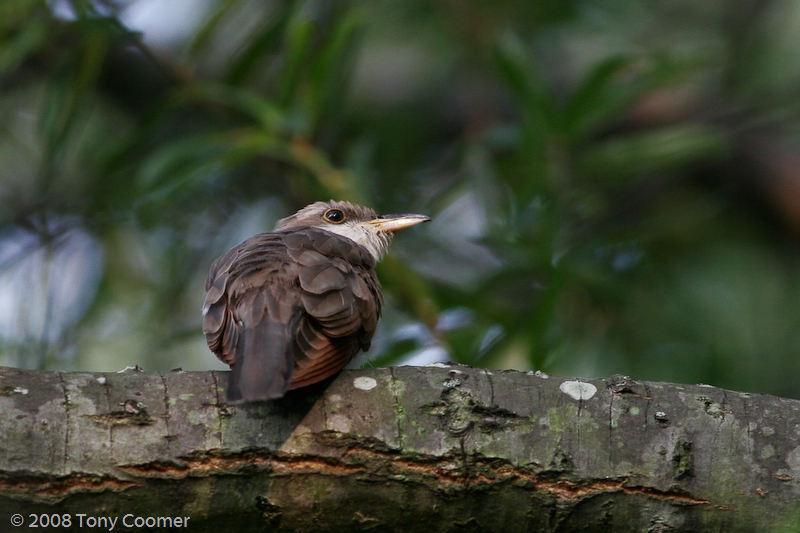|
|
Photos
© Tony Coomer, Occoquan Bay National Wildlife Refuge, Woodbridge, Virginia |
Yellow-billed Cuckoo More likely to be heard than seen in the dense vegetation of overgrown fields, second-growth woodlands, river bottoms and forests, cuckoos move slowly as they forage for caterpillars, other large insects and small frogs. The Yellow-Billed Cuckoo is a medium-sized bird, about the size of a Blue Jay or Mourning Dive, with a long, dark, white-tipped tail. It is brown above and white below, with a down-curved bill that is yellowish underneath. The Black-Billed Cuckoo has, of course, a completely black bill, but can also be distinguished by its red eye-ring, and the narrow white bars on its tail, where the Yellow-Billed bird has longer, larger white spots. The Yellow-Billed bird has a loud harsher "ka-ka- cow-cow" call, while the Black-Billed Cuckoo's song is a more melodic coo-cooing, like the name. The Yellow-Billed Cuckoo breeds throughout the US, though mostly east of the Rockies, and south into Mexico and the Caribbean. (It spends the winter in northern and central South America.) Both members of a pair work to make the nest out of twigs in a tree or bush, to incubate the bluish-green eggs, which are usually laid in their own nest, and to raise the rapidly-developing young. Nevertheless, like other cuckoos worldwide, this bird does sometimes lay eggs in nests of other species, including those of robins, cardinals and catbirds (and the Black-Billed Cuckoo!). Thus, unlike the "brood parasitism" of other birds, this activity of this native Cuckoo generally does not affect the population of rarer, already-threatened species.
|
Home | Upcoming Events | About Us | Resource Issues | News | Local Contacts Maps | Photos | Publications | Youth Education | FAQ's | Links | Membership |






